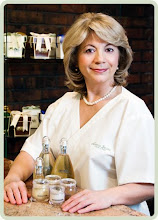An Introduction to Skin
Your Skin.
It is one of the largest organs in your body, covering 12-20 square feet. Your skin reflects beauty and sensuality, and provides the sense of touch and pleasure. Your skin even shows emotions as you grow pale with fear of red with embarrassment. Your skin provides protection from the environment, and helps to regulate body temperature either by using the contraction of fine muscles in the deep layers of the skin to retain heat – we’ve all had “goose bumps” – or by using sweat to cool.
We can enjoy all these important functions of the skin as long as it is nourished well and maintained properly. Just like any other organ, the skin derives nourishment from food and may be damaged by toxins. Toxins result as the byproducts of normal biological activity, but they may also be ingested as chemicals. Your skin is a reflection of how efficiently nutrients are being supplied to the body and how efficiently waste is being removed. Your skin reflects your diet, and waste products that are retained in the body. Your skin not only conveys your physical health, but also your emotional, mental, and spiritual states. Because the skin exfoliates and replaces itself about every 27 days, a healthy skin can be obtained fairly quickly with care and attention. Local work. Professional skin care treatments include facials, organic peels, microdermabrasion combined with an effective in-home skin care regimen – a daily and weekly routine which includes masks, serums, creams, etc.
To begin to understand the method of obtaining beautiful skin, we need to understand more about the skin’s properties. We hear a lot in natural healing circles about how it is good to maintain an alkaline environment in the body. While this is true of the blood, the skin is naturally acidic on the surface. One way the body maintains its internal alkaline environment is by displacing acid to the skin. The acid forms a waterproof protective barrier for the skin.
In addition, much of your skin has hair follicles nurtured by sebaceous glands, which secrete a fatty substance called “sebum.” It is the combination of oily sebum and acidic perspiration from sweat glands that make up the acid mantle. The acid mantle protects in several ways:
- It serves as a protective layer.
- It prevents the growth of bacteria and fungi on the skin.
- It protects from harsh elements such as sun and wind.
- It creates a healthy glow by retaining moisture in the skin.
- It waterproofs the skin and hair.
A key idea to understand is that your skin is naturally acidic. The acid mantle provides protection from the elements and retains moisture.
Labels: daily and weekly skincare regimen, organic peel, professional skincare, skin care regime


0 Comments:
Post a Comment
Subscribe to Post Comments [Atom]
<< Home